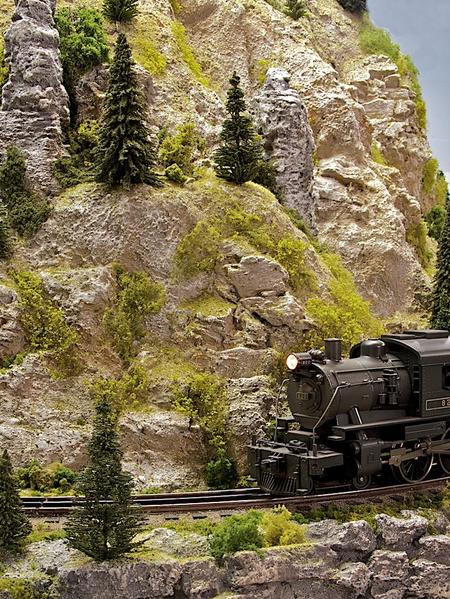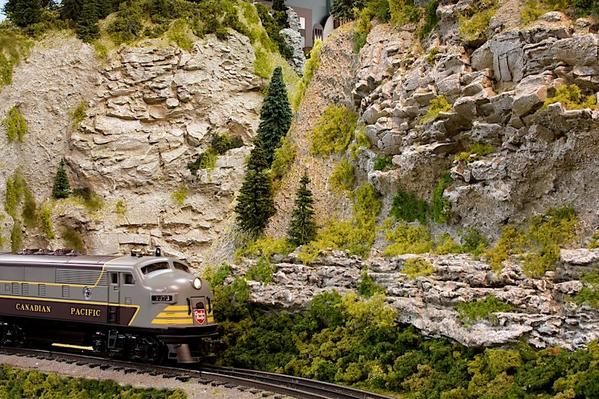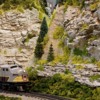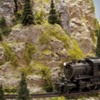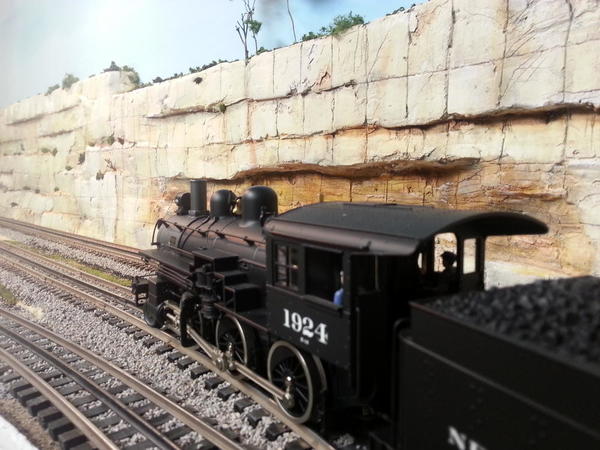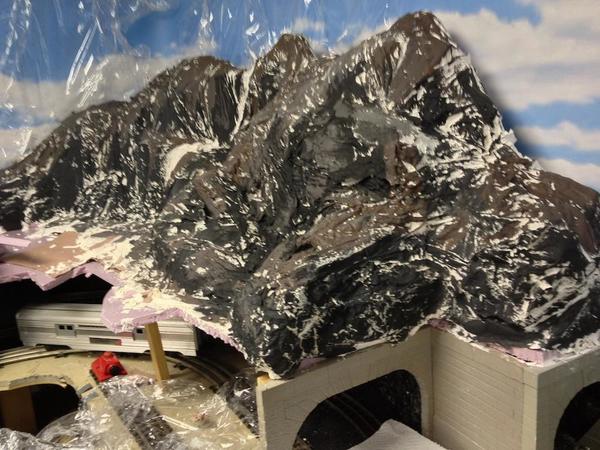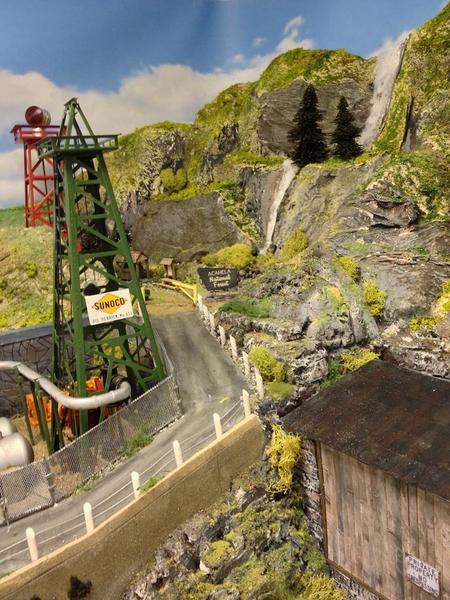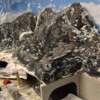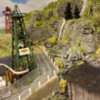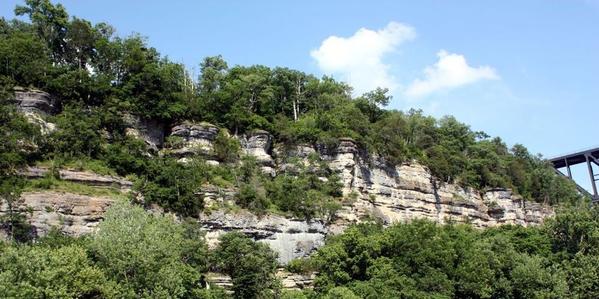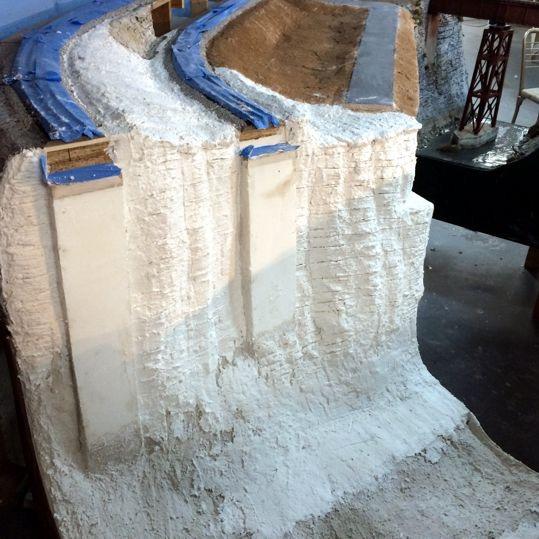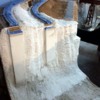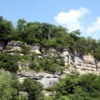Looking for the best way to cover a large cliff I am building. I have used sculptamold and structrolite and the absorption of paint can vary creating an inconsistent look. Any suggestions would be appreciated. Pictures even better! Thank you..
Replies sorted oldest to newest
Wooland Scenics Liquid pigments work well. You dilute them with water to create "washes" as dark or light as you prefer. It absorbs into the plaster and dries with a very natural looking flat finish. They come in a variety of earth tones.

I'm a novice at best when it comes to scenery but the mountain in the back and the ledge the haunted house stands on were colored with the diluted WS pigments.
Attachments
I like to use water based paints. Water based paints can also be added to the sculptamold when you're mixing it with water. That will provide an overall base color. Also, I wouldn't worry about creating a perfectly even color. Color variation will add to the realism.
I rise to second the nomination of the Woodland Scenics pigments. Great richness and depth of color. Very easy to work with,especially on Hydrocal.
Start by priming the entire cliff with flat white latex house paint. Then you won't have problems with the different materials absorbing color differently. You can also use a light tan or light gray primer to establish an overall tone for the rockwork.
As Dennis pointed out, some variation is good.
These scenes have areas of Structolite, Sculptamold, carved pink styrofoam, and plaster-of-paris rock castings all on the same cliffs, but were primed before coloring with acrylic washes.
Jim
Attachments
It is usually a mistake to disagree with Jim on anything relating to scenery, but in this case I want to play the contrarian: The best (albeit counterintuitive) color for a mountain base coat is BLACK. Think like an oil painter--you start by painting the dark shadows and then add in the details and end with the glint of sunlight (via bright-white dry brushing). It gets you the depth of deep shadows in bright sunlight without elaborate lighting.
Attachments
I've wanted to try it that way, Pete, but always seem to fall back into my usual routine of starting light, then adding black as a wash, then drybrushing back to light.
One of these days I promise I'll try it your way! In fact, I have a gallon of almost black interior latex from the "oops" shelf at Home Depot ready to go.
Can't argue with the results you get! ![]()
Jim
Hmmmmm, either one of you could come and do mine!!!! Both look very realistic.
Adding to the discussion, in addition to W-S tints, I liberally use artist acrylic tube paints. I get the cheap varieties at Michael's and work if off a palette just like a "real" artist would. Variation is critical. I took lots of pictures of Kentucky rock formations so I could understand how the strata work and what colors they were.
The walls are carved Sculptamold. The base is Gypsolite-soaked paper towels, and the "concrete" pilasters are Styrofoam bead board. Bead board is a pain since pieces easily break out and needed additional filling.
Attachments
I know I relayed this story before, but if you look closely, there's a pink iPhone 4s on "Nessie's" back. My wife and I were at Clifty State Park in Madison, IN two years ago. We were overlooking a deep ravine next to a low stone wall. She was attempting to take a picture of the water fall across the ravine and her foot started to go into a small hole next to the wall and she was losing her balance. She through her arms up to regain balance and proceeded to through her phone into the ravine.
When I was doing the stone work on the my ravines, my wife commented how much it looked like the place where she lost her phone at which time the grandkids said, "It would be cool if the phone landed on the back of a Loch Ness Monster." We made a deal. They would sculpt the monster out of Super Sculpey and I would include it in the ravine. They delivered and so did I. It's now called "Serpent Gulch". Younger grandson also fashioned a faux stone wall at the top of the ravine where the "great phone toss" took place.
The water is Envirotex two-part polyester bar-top coating. I like it much better than the W-S realistic water I used for the other ravine. I added some motion lines using W-S water effects.
Not to be a contrarian to a contrarian ![]() but starting light and darking as you go can actually highlight shadows from lighting. By this I mean a shadow isn't seen nearly as well on a dark background as it is on a light background. By way of example, in this picture there are two shadows, one to the left and one to the right of the shadow cast but the shovel. The one to the left falls on a dark background, the one to the right falls on a light background. In addition, you can wash lighter areas without a lot of pigment, dark areas need much more pigment. You can also darken depressions, underside of rocks, etc. while leaving the surround area light.
but starting light and darking as you go can actually highlight shadows from lighting. By this I mean a shadow isn't seen nearly as well on a dark background as it is on a light background. By way of example, in this picture there are two shadows, one to the left and one to the right of the shadow cast but the shovel. The one to the left falls on a dark background, the one to the right falls on a light background. In addition, you can wash lighter areas without a lot of pigment, dark areas need much more pigment. You can also darken depressions, underside of rocks, etc. while leaving the surround area light. 


Latex and acrylic paints are all I use for scenery.
Attachments
Aubv,
Thanks for the observation. I don't disagree. If I were doing a layout with sophisticated lighting, I would be tempted to ignore my own advice. The advantage of "black first" applies mostly when you don't have high-quality point lighting that is capable of casting dark shadows, since the darkness in the crevices is painted on, and so survives in the presence of the uniform lighting that many of us make do with.
Lots of ways to end up with great results, as your pics demonstrate.





